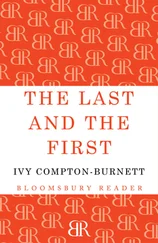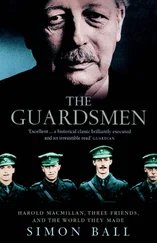Goldstine finished by giving Thompson and Standingford a list of everyone he knew about in the United States who was doing serious work on electronic computing. Then, enjoying the astonishment of his listeners, he dropped his bombshell. ‘And, of course, there’s Professor Douglas Hartree in Cambridge, England.’
Hartree had recently been appointed Professor of Mathematical Physics at Cambridge University. Goldstine informed his astonished listeners that one of Hartree’s new colleagues was building a state-of-the-art computer in the Mathematical Laboratory there. The two men had come 3,000 miles to find out that a computer was already under construction a couple of hours’ drive away from Lyons’s headquarters. Goldstine warmly recommended that Thompson and Standingford should talk to Hartree about their ideas for a business computer. As soon as they had left, he sat down and dispatched a letter to Cambridge on their behalf.
With a much clearer understanding of the technology, and buoyed up by Goldstine’s enthusiasm, Thompson and Standingford then made a tour of every organisation on his list. They were not able to see ENIAC itself, which had been taken over by the army and was being rebuilt at their Aberdeen firing range. Permission initially granted was suddenly withdrawn on the grounds of confidentiality – but Goldstine said later that the army’s engineers had probably failed to get the notoriously unreliable machine working and were too embarrassed to admit it. At the Moore School itself, where ENIAC had been built in a spirit of adventure and enthusiasm, they found that the disbanding of the original team had left ‘a general air of apathy’. A smaller experimental calculator was built and working, but no one showed the smallest interest in their ideas on office computing.
Presper Eckert and John Mauchly, who had designed and built ENIAC, had left the Moore School a year earlier (following a dispute with Goldstine and von Neumann about the right to patent their invention) to form the Electronic Control Company. They, apparently alone among the early computer pioneers, planned to develop a computer for commercial production based on the EDVAC design, to be known as the Universal Automatic Calculator or UNIVAC. Naturally, a visit to their Philadelphia office was high on Thompson and Standingford’s list of priorities.
Eckert told them that he was talking to the Prudential Insurance Company of America about designing a machine to issue bills, and to carry out actuarial calculations. The big insurance companies had millions of policyholders and employed thousands of clerks to draft policies and send out bills for premiums. The office machinery suppliers had come up with some labour-saving devices for this kind of work, such as machines for printing frequently used addresses, but essentially the insurance business required heroic efforts of typing and filing. Prudential was the first and only example Thompson and Standingford came across of a company planning to use a computer for clerical work. A visit to its offices in Newark, New Jersey, revealed a company with an attitude as progressive as that of Lyons, though in a completely different line of business. It had a large Methods Division (comparable to the Systems Research Department at Lyons), with an innovator at its head, Dr Edmund C. Berkeley (later to become the author of the first popular computing book, Giant Brains ). He was apparently confident that his company would have a machine installed and working within two years. In addition to preparing bills for insurance premiums, Berkeley planned to use the machine to prepare contracts, storing the 2,000 standard clauses and programming the machine to select those required in individual cases. This was the first Thompson and Standingford had heard of the possibilities computers offered for what we now call word processing. As things turned out, the Electronic Control Company was dogged by financial problems; in 1950 Prudential cancelled its contract with Eckert and Mauchly and later bought its first computer from IBM.
Extraordinary as it seems today, Eckert and Mauchly were out on a limb in perceiving a need for a general purpose commercial computer which could be produced for sale. The obvious candidates to pursue such a development were the existing office machine companies, who already had the customers and the sales forces to exploit a new market. Those that the Lyons pair visited, such as IBM, NCR and Burroughs, were secretive about their own research but they seemed to be more concerned to protect their traditional products than to develop entirely new ones. Standingford later wrote: ‘We were given a polite hearing, lunch and the sort of restrained reception reserved for the mentally unstable.’
It was a relief to have their confidence restored with a second visit to Goldstine. They found he had spent the intervening weeks thinking about the special requirements of office computing, and he gave them a detailed list of the components their computer would need. This time he took them to his engineering labs and showed them not only his partly built computer but prototype peripherals such as a device that would load programs and data into the machine through spinning magnetic wire (a forerunner of magnetic tape) from one reel to another. Profuse in their gratitude for Goldstine’s information and encouragement, Thompson and Standingford returned to New York and the boat home in a state of intellectual euphoria. Their minds were ablaze with the possibilities before them. While some might have used the cruise home, on the Queen Elizabeth , as an opportunity to relax, they lost no time in recording the knowledge and impressions they had gained in the first draft of the lengthy report on their visit they would be presenting to the Lyons board.
The first three sections of the report disposed of their visits to office machine companies and other businesses, concluding that Lyons’s methods were already so advanced that they had little to learn in this sphere. But Section D, headed ‘Electronic Machines in the Office’, stands as a prophetic document, showing both a firm grasp of the capabilities and limitations of the technology then developing, and a vision of where it all might lead. It was never published at the time, circulating only within Lyons, but in Britain at least no comparable account of the subject had ever been written.
Thompson and Standingford were unequivocal about their own enthusiasm for an electronic calculating machine. ‘Our object,’ they wrote, ‘in inquiring into the nature and possibilities of this machine was to find out whether it, or any adaptation of it, was capable of being put to use in commercial offices, and if this was not the case, to try to stimulate the development of such a machine.’ They went on to list the functions a computer might be capable of performing: storing data and instructions, performing sequences of calculations on stored material automatically, comparing words or figures in its memory and reacting to differences, and printing out results. They emphasised the astonishing speed at which these functions could be carried out, but showed how it posed a problem whose solution would later become the first priority in the development of the Lyons computer. ‘It is obviously wasteful to have a machine that is capable of working at these superhuman speeds,’ they wrote, ‘unless the information it is to work upon can be made available to it at relatively comparable speeds. The feeding clearly cannot be directly by clerks but mechanical and electrical means have been developed that are satisfactory.’
Thompson and Standingford recognised that what might be ‘satisfactory’ for a computer working on mathematical problems that might require minutes or hours of computation would not do in an office, ‘where the problem is to carry out a large number of simple operations’. This note of realism continued in an account of the importance of punching every input tape twice, using a device that compared the first and second versions to eliminate errors. The authors had clearly absorbed the philosophy that time on the computer was valuable, and everything possible had to be done to make sure that it was used efficiently.
Читать дальше












